
I have a confession to make. I’m a bit of a steampunk heretic, a steampunk-punk if you will. Why, you ask? Well, the thing is…based on the definitions a lot of people use, I don’t exactly write steampunk. I write alternate history that just happens to look a lot like steampunk. In my upcoming Steam and Seduction series, I made a conscious decision to leave out what many consider a key element of steampunk: aether. Magic, fairy dust, steam-power-mystery-go-juice, whatever you want to call it. I wanted to see what I could do, how far I could go, using only plausible technology that people might actually have developed had things gone differently. Power sources like, say…steam. And yes, I certainly stretch the boundaries of plausibility quite freely! But I did try to resist the siren allure of using aether to solve problems when technology alone wouldn’t cut it.
Again, you may ask…why? Isn’t aether or similar magic part of the point, part of the fun, of steampunk? Well, sure! In fact, I’m also working on a young adult steampunk series that will rely heavily on literal fairy dust to power its gadgetry, and I’m having a blast figuring all that out. But I’m also a science fiction geek from ‘way back, and I always remember Clarke’s third law: “Any sufficiently advanced technology is indistinguishable from magic.”
The thing is, so much of our actual technology might as well be magic. So when I started writing Gossamer Wing, the first book in the Steam and Seduction series, I tried to tap into how amazing technology can be, even when we don’t add magic. How it can seem like magic. Hot air balloons? That is freakin’ astonishing, that someone came up with that idea then made it happen. Tiny clockwork birds that sing when you wind them? Who even thought of doing that, and why? Or how about the first time somebody said, “Hey, I know how to make this thing go! We’ll boil some water and run it through this pipe and the pressure will push this thingy that’s connected to this other gear thingy and…oh, how do we keep it boiling? I’ll figure that out as I go along! Steam burns? Bah! The price of progress!” That person was freakin’ nuts. But brilliant.
The sheer gall of the human imagination has always pushed us to try things that seem insane at first. Sometimes they are insane; but when the insanity works…magic. Then eventually we all learn something about internal combustion or electricity, and our collective knowledge changes, and we don’t think of it as magic anymore; but that spirit is still there. Seriously, the first time I ever played with an iPhone? Magic. That was all I needed to know.
And now for a little Q & A:
1. What does Steampunk mean to you?
Steampunk is a glorious conglomeration of time travel, hand craftsmanship, ray guns, and visually rich but often dystopian settings. It also combines all the best things about Victorian (and sometimes Regency or Edwardian, depending on which direction you go) clothing, with the ability for women to wear trousers without shame. It’s basically historical + science fiction, the best of both those genres, with a heaping handful of Make Magazine and some early Harper’s Bazaar thrown in for good measure.
2. What is your favorite thing about steampunk or writing about steampunk?
I love that steampunk is a rabbit hole. You’d think it would tap out quickly: Victorians, steam-powered stuff, aether, and you’re done. But instead, it’s a sub-genre so rich with potential that it never seems to run out of new material, new interpretations. It’s also neat that it crosses so many genre lines, particularly when we’re talking about steampunk romance.
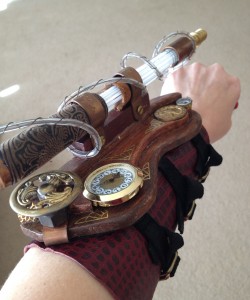
Raygun. Also has a compass in the stock and this thing which tells time.
3. What is your favorite steampunk accessory?
1) My gauntlet-mounted ray gun, which is powered by concentrated fairy spite.
2) Boots appropriate for swashbuckling. You gotta be able to buckle a little swash while you’re tooling around in time and space on your steam-powered chronovelocimobile, zapping eldritch creatures with your ray gun.
4. What turned you on to steampunk?
My sister! She was a steampunk hipster. Several years ago, before anybody had really started talking about steampunk in mainstream fiction, she showed me some pictures of this amazing clockwork stuff that somebody had made, and I wanted more! So I was hooked on the visual art aspects long before I started seeing authors like Gail Carriger putting out great steampunk/gaslamp stories.
5. Do you have any upcoming Steampunk stories you can tell us about?
I do! Gossamer Wing, the first book in my new Steam and Seduction series, will be out later this year from Berkley Sensation! Two more books are planned, and there could be more after that.
6. Who is your favorite character of all from one of your Steampunk stories?
So far my favorite is actually a villain, the bad guy in Gossamer Wing. His name is Jacques Martin, but he is known in the spy world as Coeur de Fer, Heart of Iron. He does not actually have an iron heart, but he has a gold-and-stainless-steel claw hand, an enhanced metal ear, a lot of internal conflict, and telling you any more would spoil the ending.
7. What’s the hardest thing about creating a Steampunk universe?
Keeping the history straight! Because the Steam and Seduction universe relies so heavily on alternate history and gadgets that are at least somewhat plausible, I feel compelled to drill down and try to figure out exactly where the divergence points would have occurred for each new piece of technology I introduce (reader beware: I often start out compelled, then end up half-assing the search and just making the rest up). This is where relying on aether or something similar would have made things much simpler.
8. What’s the easiest thing about creating a Steampunk universe?
The characters. It’s always the characters.
9. What does steampunk allow you to do as a writer that no other genres can?
Steampunk lets me merge all my numerous, weird areas of interest into one big literary lump. Historicals? Check! Science fiction? Check! Minute esoteric details? Stuff that’s pulled from strategy learned while campaigning in RPGs? Society’s ills, writ large? Smut? Check, check, check and checkarooni! In many ways, the voice I use for writing contemporary romance is much more constrained; with steampunk, it’s just a big mental playground where almost anything goes and I don’t have to censor my fundamental nerdiness.
10. What are the challenges and advantages to writing a steampunk story?
It just depends. Sometimes it’s a challenge just figuring out the devices and how to make sure the steampunk elements aren’t just tacked on as an afterthought; they need to be integral to the world and to the plot, not just gears stuck on a top hat. If your character is wearing goggles, there needs to be a reason for that other than fashion. The world needs to drive the devices, not the other way around. But for those with the right mindset, as I’ve said, steampunk can really be a chance to run with a lot of crazy ideas you just can’t use anywhere else.
11. How much research does it take and how much imagination?
This also depends. For Steam and Seduction in general, there’s been a lot of research. 50/50, maybe, for some phases of Gossamer Wing. So far, the same for book two in the series, which is my current work in progress. And I’ve already done a lot of research for book three (with still more to do), so it’ll probably be more like 60/40 or more for that one. On the other hand, my steampunk erotic romance, The Lamplighter’s Love, was mostly imagination. And the young adult series I’m working on is nearly pure imagination, aside from some stuff I already know about the Victorian era; I think that’s the benefit of using aether (or fairy dust, etc.) as an energy source. It frees you of so many constraints, because once magic is involved, just about anything can happen!
You can’t get Gossamer Wing yet, but you can get The Lamplighter’s Love (a 2013 EPIC award finalist that RT Book Reviews calls “steampunk erotica at its best!”)
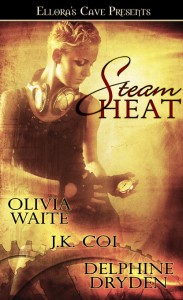 Mary has trained for years to become the next Lamplighter of London. When her chance comes, however, she realizes the massive difference engines of the Lampworkers’ guild would be a cold substitute indeed for the passion she’s begun to explore with the current Lamplighter, Nicholas.
Mary has trained for years to become the next Lamplighter of London. When her chance comes, however, she realizes the massive difference engines of the Lampworkers’ guild would be a cold substitute indeed for the passion she’s begun to explore with the current Lamplighter, Nicholas.
Though fate, it seems, is determined to separate them. A rival threatens to upset all Mary’s hopes and dreams within the guild, and with her newfound love.
Through intrigue and deception, bitter contention and scorching erotic discovery, Mary and Nicholas find new ways to get what they need as they create a future together.
(The Lamplighter’s Love is available in ebook, or as part of the print anthology Steam Heat).
Delphine tried unsuccessfully to get past being an English major by becoming a lawyer, a special education teacher, and an educational diagnostician. She finally gave up the fight several years ago and began writing full-time. When not writing or doing “mommy stuff” Delphine reads voraciously and noodles around with web design. She counts herself fortunate to have two absurdly precocious children, and two delightful if occasionally disobedient mutts. Delphine and her family are all Texas natives, and reside in unapologetic suburban bliss near Houston.




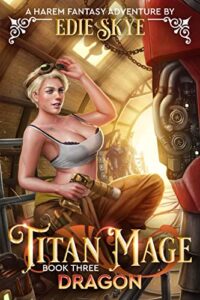

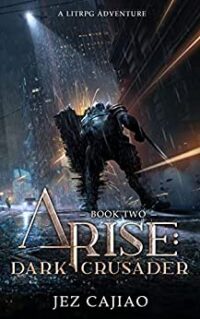
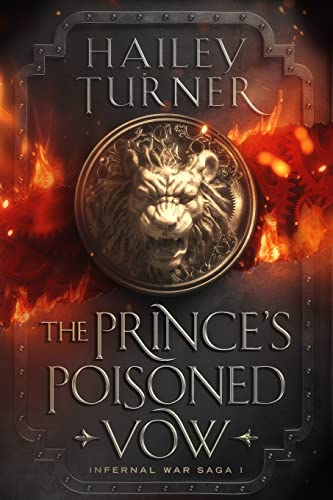



I thoroughly enjoyed your take on steampunk. I love the genre, especially for the whimsy it breeds. Even in dystopian settings, steampunk lends an air of optimism, I think.
Best of luck with all your steampunk adventures, aether powered or not.
Thank you! I agree, I often find it less dystopian than actual Victorian stuff 🙂
Cool idea to leave out the aether. I am curious to see how you managed;).
Heh…me, too. I’m writing the second book in the series right now, and it’s getting harder and harder to resist the temptation. But Gossamer Wing, at least, is aether-free!
I’ve only actually read a couple of Steampunk stories and did enjoy them. Alternative history just isn’t something I’m usually drawn to. But you know I’ll read yours, of course. 😉
Congrats on the new release!
*hugs* Thanks, hon! I hope you’ll enjoy it.
I love the idea of using existing technology. The Romans heated their houses with steam run through pipes under the floor. Archimedes invented all kinds of high-tech weapons, including a solar-powered crystal to set ships on fire. Lord only knows what the Antikythera Mechanism did over 2,000 years ago. Stories sound great . Look forward to reading them Rita
I based one element in Gossamer Wing on a piece of Chinese technology from 132 A.D. 🙂 Well, that and possibly a character invents fiber optics…
LOL – fabulous and entertaining! Love the insight and twists of humor. Congrats.
Thank you!
I do like a good steampunk and what a neat twist by using actual science instead of aether. Sounds like an intriguing read.
Thanks! Fingers crossed that people will indeed find it intriguing. It’s certainly fun stuff to write!
Interesting gadget and pic.
It was fun to make, too 🙂 It also doubles as a laser pointer.
Love the ray gun with the compass in the stock and this thing that tells time! Steampunk version of Red Ryder BB Gun-what a hoot!